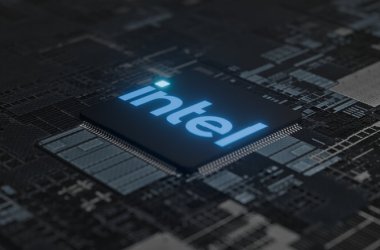 As major cellular equipment makers push small cells as tools to boost mobile data capacity, two smaller manufacturers are building more intelligence into the devices.
As major cellular equipment makers push small cells as tools to boost mobile data capacity, two smaller manufacturers are building more intelligence into the devices.
On Thursday, startup SpiderCloud announced a resale deal with NEC, and Ubiquisys said it would demonstrate small cells with solid-state storage and Intel processors at the Small Cell World conference next week in London.
Small cells are fairly new to enterprises and public spaces, though the concept of deploying more radios closer to users took hold a few years ago with femtocells for homes with poor coverage. Closer in size to Wi-Fi access points than to traditional cellular base stations, they typically are installed on lamp posts or the sides of buildings. Small, distributed cells can provide more capacity to individuals by reusing the same spectrum a carrier already uses on traditional cell towers, as long as the two types of radios don’t interfere with each other.
But some vendors are looking beyond those efficiency gains to other ways in which small cells could boost performance in local environments. There’s more that carriers can do if they have cells deployed close to subscribers, those companies say.
SpiderCloud is focusing on enterprises with its SmartCloud system, which consists of Radio Node small cells and Services Node management units. The idea is for the Services Node to both help the Radio Nodes remain coordinated and link the cellular system to the enterprise’s LAN and applications, said Ronny Haraldsvik, the company’s chief marketing officer.
The SmartCloud system is designed as an alternative to distributed antenna systems, the most common mechanism for boosting mobile performance in an office.
“This installs like an enterprise Wi-Fi system,” Haraldsvik said. It can be set up in a matter of days, including automatic adjustments to prevent interference among radio nodes and between those nodes and cell towers outside. By contrast, distributed antenna systems typically take nine months or more to plan and deploy, and they usually require buy-in from all or most of the tenants in a building, Haraldsvik said.
Also, the Services Node lets the carrier provide managed services such as security, compliance and Internet Protocol PBX capability. By distinguishing between employees and other mobile users through access lists, a mobile operator can improve service for everyone near the small cells and reserve other benefits for various employees based on policies, he said.
The idea of going directly to one enterprise customer, and setting up an indoor cellular system when they need it, should be attractive to service providers and get customers what they want sooner, said Ovum analyst Daryl Schoolar. NEC is a strong partner to have in the small-cell market because it’s been one of the most successful of the big vendors at selling small cells to carriers, he said.
Ubiquisys, a small-cell pioneer that benefitted from an early bet on the technology by Google in 2007, is planning the first demonstration of its “smart cells” on a commercial carrier network next week, according to Keith Day, vice president of marketing. Day declined to say what carrier in London would host the demonstration.
The company developed the smart cells with Intel, eyeing the opportunity to cache content and run applications right at the edge of the network. This can both boost performance for subscribers and make better use of the wired links to small cells, which often are not as fast as the lines to traditional base stations, he said. More work at the edge means less traffic over the backhaul.
The cells to be demonstrated next week will have Intel Core processors, 8GB of memory and 80GB SSDs (solid-state disks), Day said.
“It does a lot of things much more efficiently, which otherwise would be done elsewhere,” Day said.
Using well-established tools for determining what content users will most likely want to download, the Ubiquisys system can store certain data in the smart cell and avoid round trips to storage or servers deeper in the network. For example, once one person near the cell watches a YouTube video, that video can be cached locally so another person nearby can download it more quickly, Day said.
The performance benefit could work upstream too, letting users quickly upload photos to the cell and then have them sent the rest of the way into the network over time.
Certain applications, such as antivirus protection, could also run on the small cell, giving a performance benefit over trying to run them in the core of the network, Day said.
It’s not clear whether carriers are ready for this type of capability in small cells for the general public, but it’s important for smaller equipment vendors to distinguish themselves with new technology, Ovum’s Schoolar said. “They might be kind of ahead of the curve on this stuff,” he said. Ubiquisys says its smart cells are in trials with multiple carriers and are available now.





